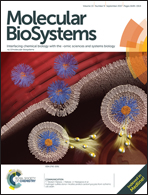A comparative review of computational methods for pathway perturbation analysis: dynamical and topological perspectives†
Abstract
Stem cells offer great promise within the field of regenerative medicine but despite encouraging results, the large scale use of stem cells for therapeutic applications still faces challenges when it comes to controlling signaling pathway responses with respect to environmental perturbations. This step is critical for the elaboration of stable and reproducible differentiation protocols, and computational modeling can be helpful to overcome these difficulties. This article is a comparative review of the mechanism-based methods used for hypothesis-driven approaches and data-driven methods which are two types of computational approaches commonly used for analysing the dynamics of pathways involved in stem cell regulation. We firstly review works based on kinetic modelling. We emphasize the relationships between the dynamics of these pathways and their topological features, and illustrative examples are described to show how the analysis of these relationships can contribute to a more detailed and formal understanding of the signaling dynamics. This discussion is followed by a review of the recent data-driven pathway analysis methods. Based on a simplified description of the pathways, these methods are able to handle high dimensionality data, and topological features of the pathways taken into account in the latest methods improve both accuracy and predictive power. Nevertheless, progress is still needed to clarify the biological meaning of the topological decompositions used by these methods.



 Please wait while we load your content...
Please wait while we load your content...